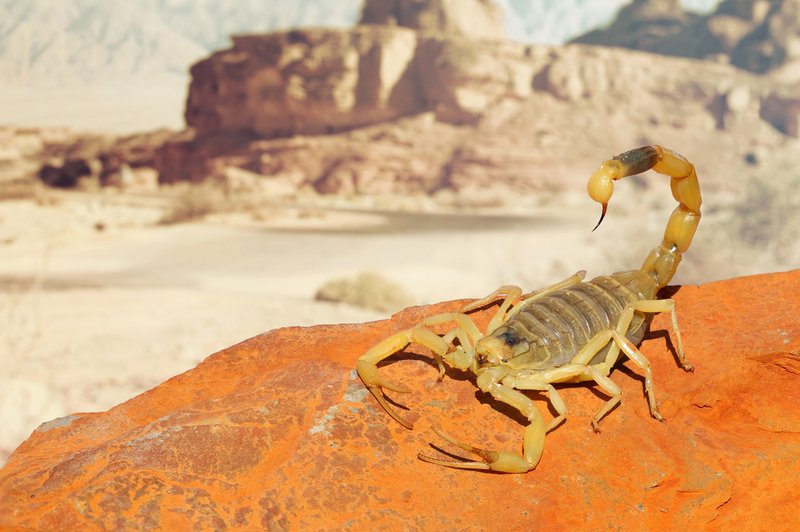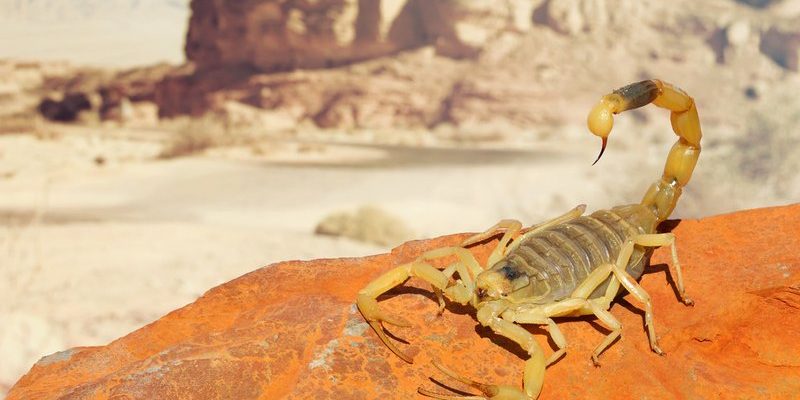
Imagine a tiny, stealthy predator moving through the desert soil—its yellowish body blending in seamlessly with the sandy landscape. Think of it like a ninja of the night, quietly hunting insects and small vertebrates. But it’s not just about survival for the Deathstalker scorpion; it’s about contributing to the complex web of life around it. Let’s dive deeper into what makes this scorpion so vital to nature.
Understanding the Deathstalker Scorpion
The Deathstalker scorpion is one of the most venomous scorpions in the world, known for its potent sting that can cause severe pain. But don’t let that scare you! These creatures are incredibly fascinating. They typically inhabit arid regions, especially in parts of North Africa and the Middle East. Their bodies are designed for survival in harsh climates, with adaptations like a waxy exoskeleton that helps them retain moisture.
Despite their fearsome reputation, Deathstalkers have a unique lifestyle. Unlike some species that rely on ambush tactics, these scorpions are actively foragers. They search for food at night, using their keen sense of smell to track down prey. This behavior not only ensures their survival but also keeps populations of insects in check, which is crucial for maintaining ecological balance.
Interestingly, they don’t just prey on insects. Deathstalkers can also consume small rodents and lizards. When they catch their prey with those pincers, they deliver venom through their stingers, immobilizing their meal. This process is critical because it helps regulate the populations of various species in their habitat.
The Ecosystem’s Balance
You might be wondering why the Deathstalker scorpion’s role matters in the bigger picture. Well, these scorpions are part of a broader ecosystem where every creature has its place. By controlling the insect population, they help prevent outbreaks that could disrupt the delicate balance of life around them.
For example, in a desert environment, insects can reproduce rapidly. If left unchecked, they could overconsume vegetation, leading to soil degradation and habitat loss for other species. The Deathstalker scorpion acts as a natural pest control, ensuring that these insects don’t take over the landscape.
Moreover, the presence of these scorpions can indicate the health of the ecosystem. A thriving population suggests a stable environment, while declines may signal ecological issues. So, keeping an eye on the Deathstalker can give us insights into the health of its habitat.
Predators and Prey
While the Deathstalker scorpion is a formidable predator, it also has its share of enemies. Birds, larger mammals, and even other insects are known to hunt these scorpions. This predator-prey dynamic plays a vital role in the ecosystem as well. It ensures that no single species dominates, fostering biodiversity.
Interestingly, the venom of the Deathstalker scorpion isn’t just a weapon against its prey. Some of its natural enemies have shown resilience, developing ways to avoid being stung. This constant interaction is a hallmark of healthy ecosystems—nature always finds a way to adapt.
When these scorpions are overhunted or their habitats are disturbed, it can cause a ripple effect throughout the food chain. Fewer Deathstalkers mean more insects, which can lead to overpopulation and subsequent problems for plant life. This interconnectedness is a reminder of how delicate nature can be.
Impact on Human Life and Medicine
You might be surprised to learn that the Deathstalker scorpion can have a significant impact on human life, especially in the field of medicine. The venom of this scorpion contains compounds that researchers are exploring for their potential in treating diseases, including cancer. It’s a fascinating area of study where nature meets medicine.
The venom holds a cocktail of proteins that have shown promise in targeting cancer cells. Scientists are working on developing medications that could harness these properties, turning a creature often feared into a potential lifesaver. So, the next time you hear about a Deathstalker, remember it’s not just a scary creature; it could be a hero in the making!
However, the enthusiasm for its venom should be balanced with caution. Overharvesting these scorpions for research can threaten their populations. It’s essential to approach this delicate balance wisely, ensuring that we don’t jeopardize the very species we seek to learn from.
The Deathstalker Scorpion’s Habitat
The natural habitat of the Deathstalker scorpion is predominantly arid regions. Think of dry deserts and rocky terrains where few other creatures can thrive. These challenging environments have shaped the scorpion’s adaptations over time, helping it survive with minimal water.
In its habitat, it typically hides under rocks or in burrows, where it can evade the harsh sunlight and conserve moisture. During the day, it waits patiently, and at night, it becomes an active hunter. This nighttime lifestyle protects it from the heat and helps it avoid predators.
Unfortunately, human activities like urban expansion and agriculture are infringing on these habitats. As deserts are developed or altered for farming, the Deathstalker scorpion and its ecosystem face challenges. Protecting their natural environments is crucial not just for their survival but also for the overall health of the ecosystem they support.
Conservation Efforts
Conserving the Deathstalker scorpion and its habitats is essential for maintaining ecological balance. As mentioned earlier, these little creatures play a crucial role in controlling insect populations and are indicators of ecosystem health. So, what can be done to help?
First, awareness is key. Educating local communities about the importance of the Deathstalker and its role in the ecosystem can lead to better conservation practices. It’s essential to foster respect for these creatures rather than fear.
Additionally, habitat protection is critical. Establishing protected areas where the Deathstalker scorpion can thrive without human interference will help ensure its survival. Collaborations involving scientists, conservationists, and local governments can lead to effective strategies for preserving these ecosystems.
Lastly, research plays a vital role in conservation. Understanding the scorpion’s behavior, habitat needs, and the threats it faces can inform better protection efforts. Every little bit of information helps us grasp how to create a sustainable future for the Deathstalker and the intricate ecosystems in which it lives.
In conclusion, the Deathstalker scorpion is more than just a venomous creature to be feared. It’s a vital component of its ecosystem, helping to maintain balance and offering potential breakthroughs in medicine. By understanding and respecting its role, we can appreciate the intricate dance of life in nature. So, the next time you hear about this scorpion, remember it’s nature’s hidden treasure, playing a crucial role in the web of life around us.

